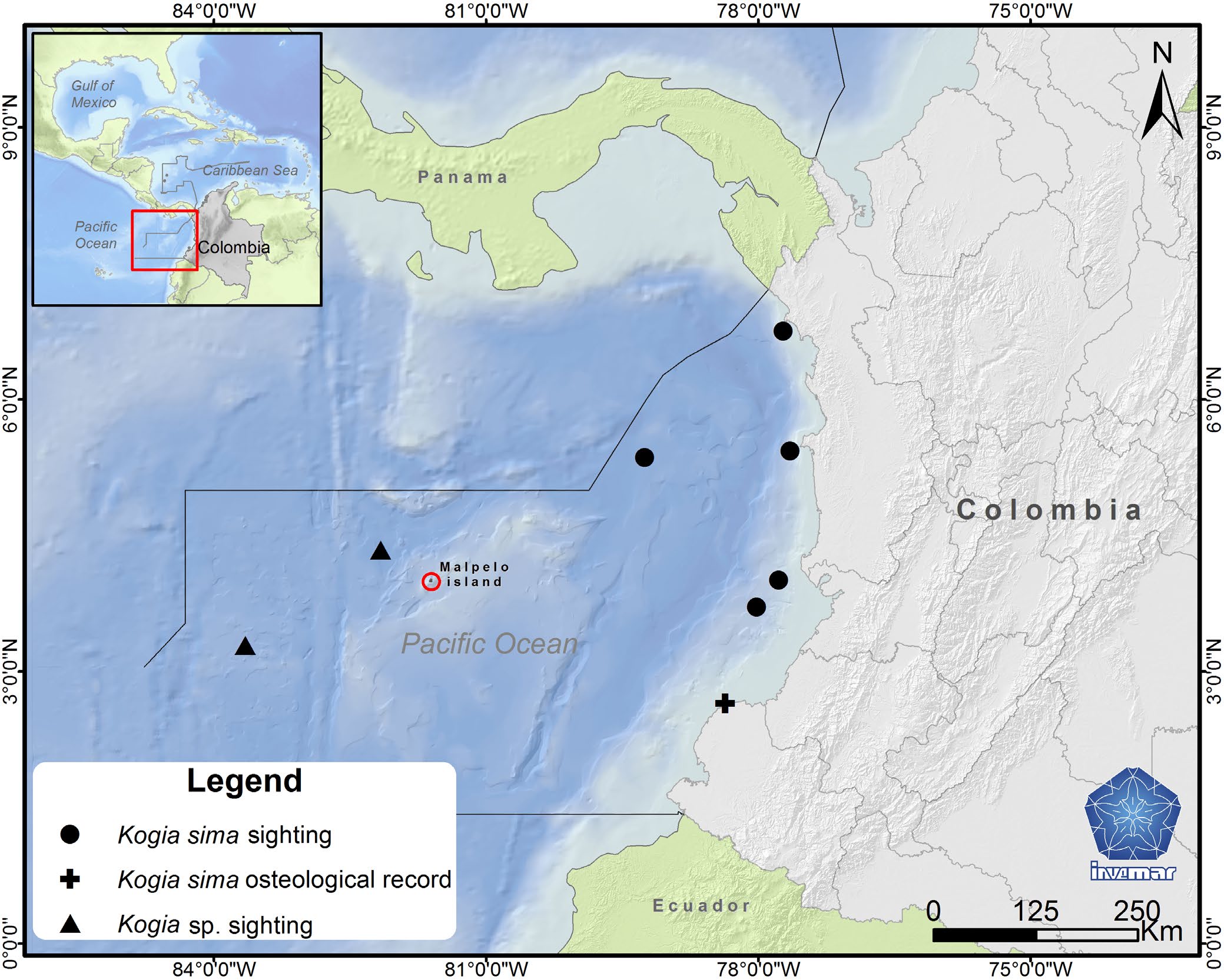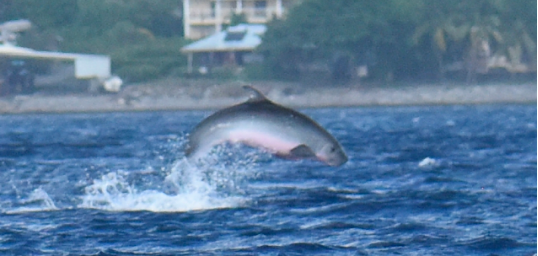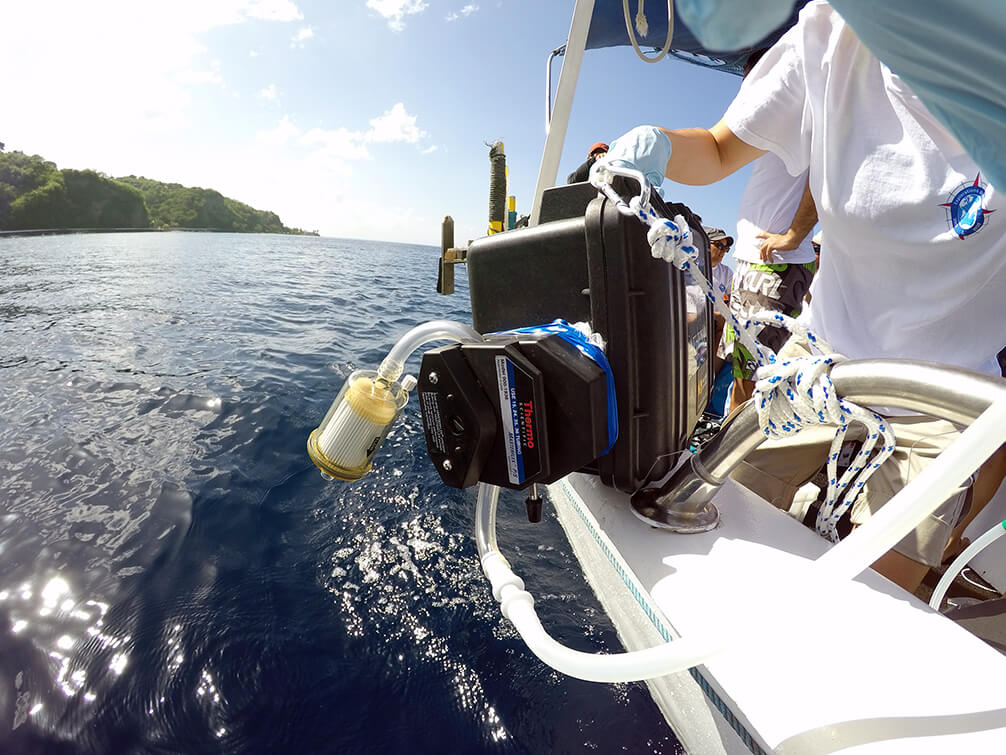April 16, 2021
Detection of the world’s smallest sperm whale in Malpelo
A major discovery
In March 2018, during the Monaco Explorations mission to Malpelo (Colombia), numerous samples were taken in order to study the marine biodiversity of this remote geographical area, particularly through the study of environmental DNA. This scientific investigation allows, from seawater samples containing DNA fragments, to trace the passage of marine species, including megafauna. The analyses of these fragments and their comparison with reference genomic banks make it possible to detect the presence of species that are sometimes very rarely observed in the sampled area, and even to discover new species.
The sampling carried out during this campaign revealed the presence in the waters of Malpelo of the smallest sperm whale in the world, known as the Dwarf sperm whale, Kogia sima.
A new scientific publication from the research work of the Malpelo 2018 mission
This discovery was the subject of a recent publication in the review Ecology and Evolution. One of the authors of this scientific article is David Mouillot, University of Montpellier, Research Director of the MARBEC (MARine Biodiversity, Exploitation and Conservation) Joint Research Unit. He was in charge of the environmental DNA research program of the Malpelo mission.
The two sightings recorded in the area around Malpelo (black triangles in the map below) did not make it possible to identify the dwarf sperm whale with certitude. It is now done, thanks to the environmental DNA, technique used during the Monaco Explorations mission in Malpelo.


A very rarely seen animal
The dwarf sperm whale (Kogia sima) is a rare marine mammal. It is an animal very little referenced in the world because its rare appearances are often furtive. It is particularly discreet, just like the pygmy sperm whale, Kogia breviceps, its close relative. David Mouillot’s team had the chance to photograph one Kogia sima during a previous mission of Monaco Explorations in Martinique. A rare photo.
Two key results
The detection of the dwarf sperm whale in Malpelo waters using the environmental DNA technique has allowed to achieve two essential results:
- to differentiate in terms of environmental DNA analysis two closely related species, namely the dwarf sperm whale and the pygmy sperm whale,
- to reinforce the role and importance of the protection of the Malpelo area by demonstrating its unique character in terms of marine biodiversity and as a refuge area for rare and threatened marine species.

